Do you know that you can get free herbs month to month year-round by cutting methods from the mother’s plant? An in the post today, we’ve listed 13 Herbs That You Can Grow from Cuttings that you will easy to make at home.
It also is an easy and less time-consuming method than seed propagation to start your own nursery. Just with a few successful cuttings, you can lead to an immense wealth of fresh herbs within reach. Before beginning, you just know some basic information, you will grow a healthy herb garden.
For soft-stemmed herbs like basil, mint, lemon balm, and stevia, all you need is a glass of water to place the cuttings in, a sunny windowsill, and a bit of your patience. Woody herbs like thyme, tarragon, sage, oregano, and marjoram require soil instead of a glass of water, and some need a little help from a rooting hormone.
For this case, you just need to drop your cuttings in water, or dip them in a rooting hormone and plant them into the soil, and in just weeks, your cuttings will be forming new roots. Once the roots have formed, you can transplant them into pots or move them outdoors. Happy gardening!
#1 Basil
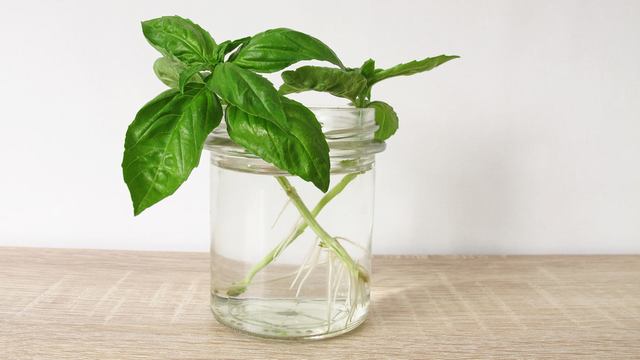 Image Credits: Gardeningknowhow
Image Credits: Gardeningknowhow
Basil is one of the easiest herbs to regrow from cuttings, and you don’t need fancy tools, just clean water, a sunny windowsill, and a little patience.
Snip a few healthy stems just below the leaf node, remove the lower leaves, and place them in a clear jar like this one. Change the water every few days to keep it fresh and encourage strong root growth.
In just a couple of weeks, you’ll see roots forming, and soon you’ll have new basil plants ready to pot up or tuck into your garden.
#2 Mints
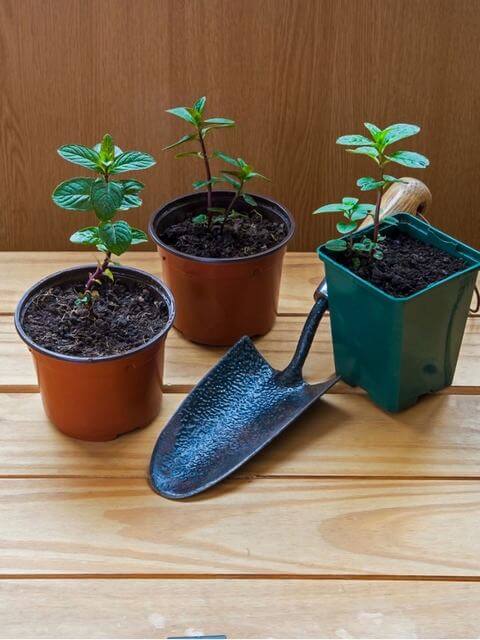 Image Credits: Gardeningknowhow
Image Credits: Gardeningknowhow
Once your mint stems have a strong root system in water, it’s time to transplant them into soil just like this. Choose small pots with good drainage and gently firm the soil around the roots to help them settle.
Keep the soil moist (but not soggy) and place the pots in a bright spot without direct harsh sunlight. In no time, you’ll have a flourishing mint patch perfect for teas, salads, or garnishing your favorite dishes.
#3 Lemon Balm
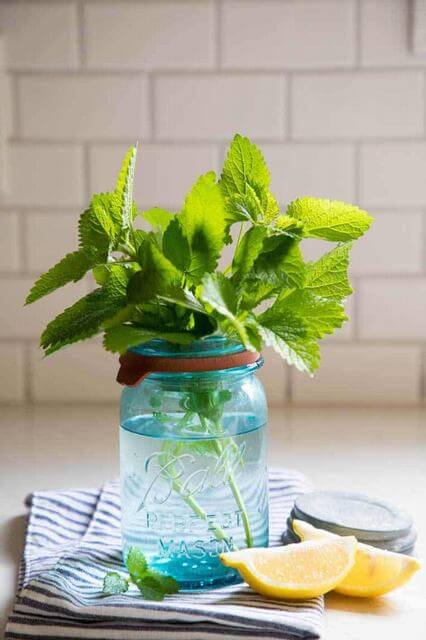 Image Credits: Feastandfarm
Image Credits: Feastandfarm
Just like mint, lemon balm roots easily in water, especially when placed in a sunny kitchen window. Snip fresh stems, strip the lower leaves, and let the magic happen. Roots will start forming in about 10 to 14 days.
Remember to change the water every few days to keep things fresh and prevent rot. Once rooted, you can pot them up and enjoy this fragrant herb in teas, desserts, or even calming bath soaks.
#4 Sage
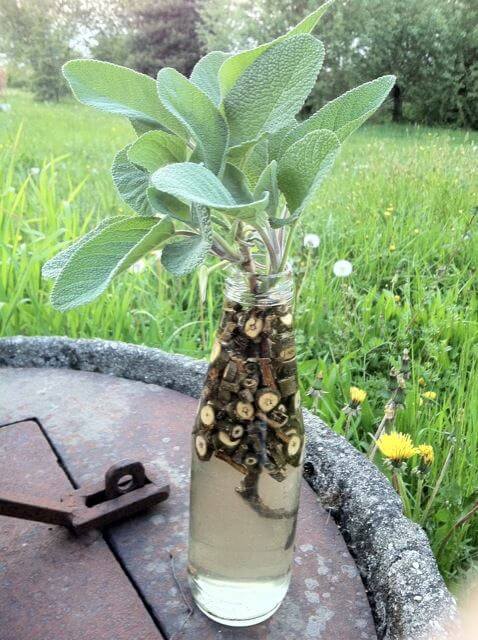 Image Credits: Anandavalley
Image Credits: Anandavalley
Woody herbs like sage take a bit more time to root, but placing them in a narrow-necked bottle like this helps keep stems upright and leaves dry.
The small pieces of wood inside help stabilize the cuttings and might even encourage natural rooting. Trim each cutting below a leaf node and remove the bottom leaves before placing them in water.
Be patient, keep the water fresh, and soon you’ll have strong new roots ready for potting into soil.
#5 Parsley
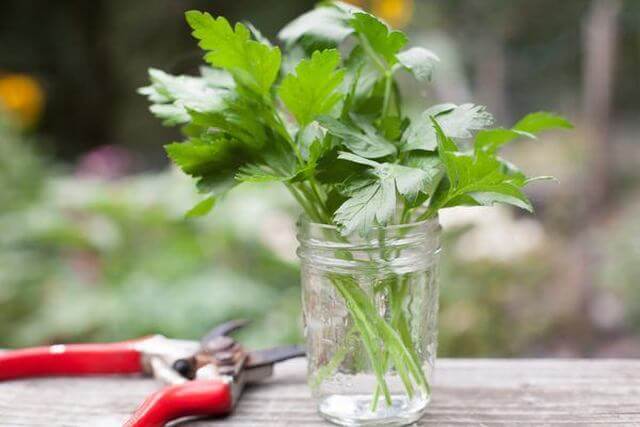 Image Credits: Ehow
Image Credits: Ehow
Fresh parsley cuttings like these are a great way to keep your herb supply going strong without buying more plants. Simply snip a few healthy stems and place them in a clean jar filled with water, then set it near a bright window.
Be sure to remove any leaves below the waterline to prevent rot and change the water every couple of days.
In about two weeks, you’ll start to see little white roots forming. Once they’re an inch or two long, it’s time to move your parsley into a pot with soil and let it grow into a full, leafy plant.
#6 Lavender
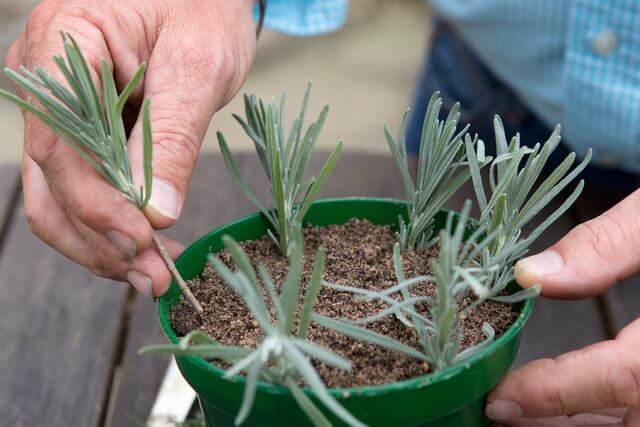 Image Credits: Gardenersworld
Image Credits: Gardenersworld
These lavender cuttings are getting a perfect head start in a pot of well-draining soil. Lavender prefers a dry, airy environment, so skipping the water jar and going straight to soil works best.
Dip the cut end of each stem in rooting hormone before gently inserting it into moist, sandy soil. Place the pot in a bright but sheltered spot and mist occasionally to keep humidity up without overwatering.
With a little care and patience, you’ll soon have fragrant lavender plants ready to fill your garden or porch with a calming scent.
#7 Savory
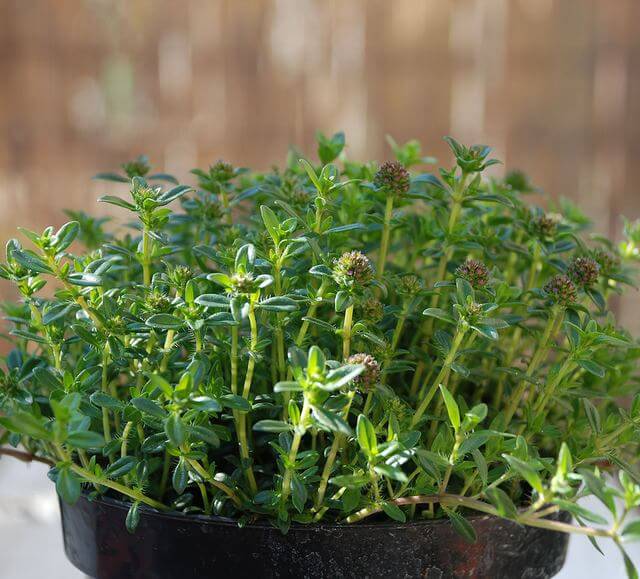 Image Credits: Harvesttotable
Image Credits: Harvesttotable
Savory is a lesser-known herb with a bold, peppery flavor, and it’s super easy to grow from cuttings. Choose tender young stems about 4–5 inches long, trim off the lower leaves, and dip the cut end in a bit of rooting hormone.
Plant the cuttings into a pot filled with moist, well-draining soil and place them in a bright, warm spot. Mist the soil lightly to keep it damp, and watch for new growth over the next couple of weeks.
Once established, savory makes a delicious addition to bean dishes, meats, and homemade spice blends.
#8 Stevia
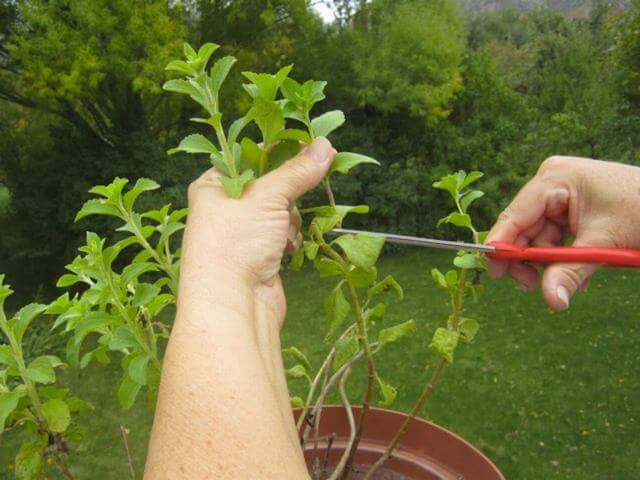 Image Credits: Mikesbackyardnursery
Image Credits: Mikesbackyardnursery
Stevia is a sweet little herb you can easily grow at home from cuttings, and it’s perfect if you’re looking to cut back on sugar.
Just snip a few healthy stems from a mature stevia plant and strip the leaves from the lower half. Dip the ends in rooting hormone and plant them in moist, well-draining soil.
Keep the cuttings in a warm, sunny spot and mist them lightly every day to help them take root. With a bit of care, you’ll soon have your own natural sweetener growing right on your windowsill or patio.
#9 Oregano
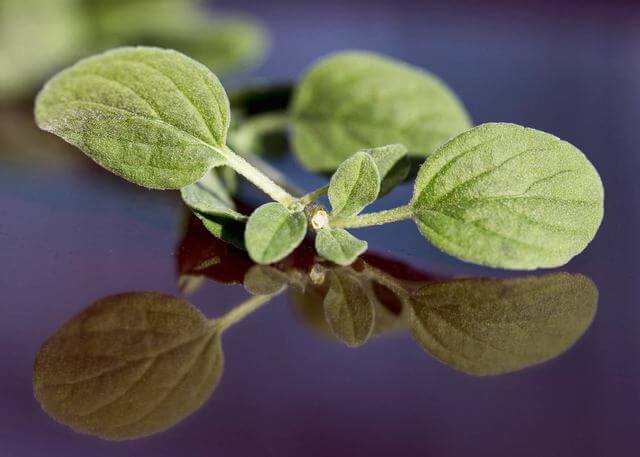 Image Credits: Indoorgardenook
Image Credits: Indoorgardenook
Oregano is a hardy herb that grows beautifully from cuttings, and once established, it just keeps on giving. To get started, snip a few non-flowering stems about 4–6 inches long and remove the lower leaves.
Dip the cut ends in rooting hormone, then tuck them into moist potting soil or a mix of sand and peat. Keep the pot in a warm, bright place and mist regularly to maintain humidity.
In a few short weeks, you’ll have fresh, fragrant oregano ready to enhance your pasta dishes, pizzas, and more.
#10 Marjoram
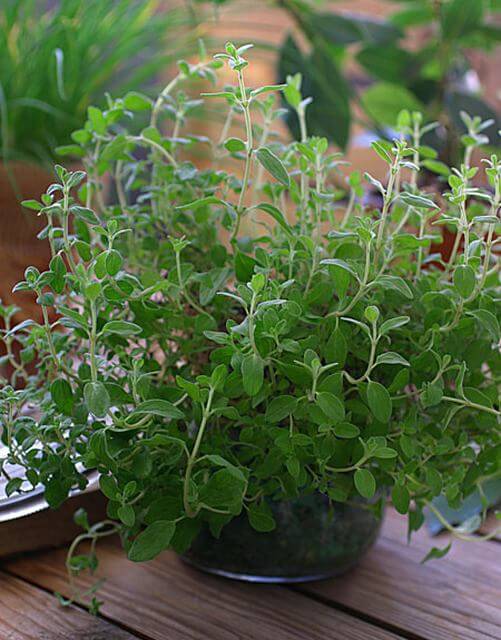 Image Credits: Growveg
Image Credits: Growveg
Marjoram is a gentle, aromatic herb that’s easy to propagate from cuttings and brings a soft, sweet flavor to your kitchen.
Start by cutting healthy, non-flowering stems about 4 inches long, and strip off the leaves on the bottom half. Dip the cut ends in rooting hormone, then plant them in moist, well-draining soil.
Place the pot in a sunny spot with indirect light and keep the soil slightly damp until roots form. With just a little care, your marjoram cuttings will grow into lush plants perfect for soups, salads, and savory dishes.
#11 Salvia
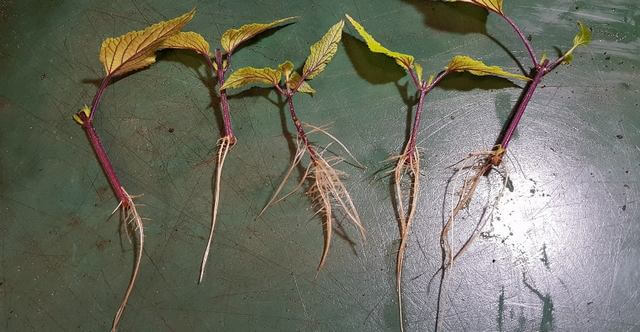 Image Credits: Thepropagatorblog
Image Credits: Thepropagatorblog
Salvia, with its vibrant leaves and striking flowers, is a wonderful herb to grow from cuttings if you’re after both beauty and flavor.
Choose young, soft stems about 4–6 inches long and remove the lower leaves before dipping the cut end in rooting hormone. Plant the cuttings into moist soil and place the pot somewhere warm with indirect sunlight.
Keep the humidity up by loosely covering the pot with a plastic bag or misting daily. In just a few weeks, your salvia will start rooting, ready to thrive in your garden or brighten up a sunny windowsill.
#12 Thyme
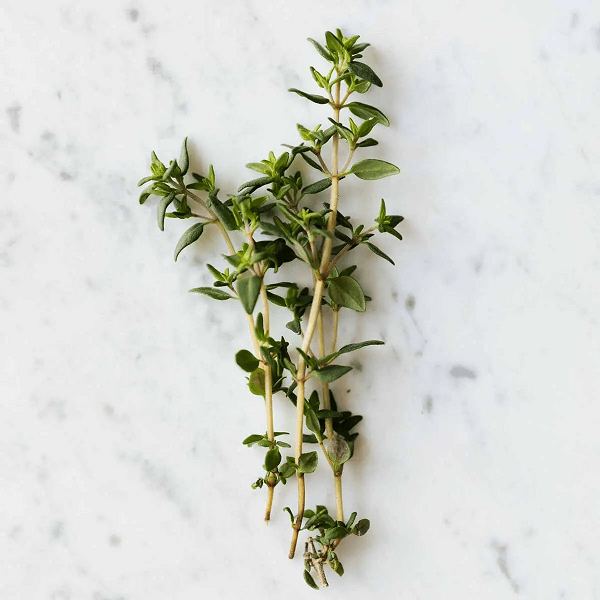 Image Credits: Thekitchenherbs
Image Credits: Thekitchenherbs
Thyme is a tough little herb that’s surprisingly easy to grow from cuttings, and it brings a lovely aroma to any space. Snip a few healthy, non-woody stems about 3–5 inches long and strip off the bottom leaves.
Dip the cut ends in rooting hormone, then plant them directly into moist, well-draining soil. Keep the pot in a warm, sunny area and mist occasionally to help the cuttings stay hydrated.
With a little patience, your thyme will take root and soon be ready to flavor everything from roasted potatoes to herbal teas.
#13 Tarragon
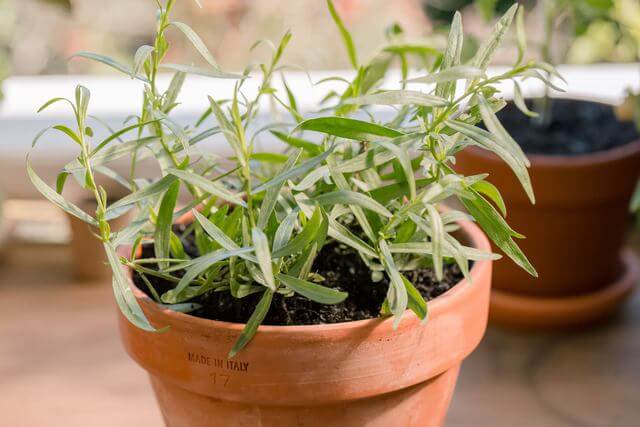 Image Credits: Thespruce
Image Credits: Thespruce
Tarragon is a flavorful herb that’s best grown from cuttings, especially since true French tarragon doesn’t grow well from seed.
To start, take 4–6-inch softwood cuttings from a healthy plant and remove the lower leaves. Dip the cut end into rooting hormone and plant it in moist, well-draining soil or a sand-perlite mix.
Keep the pot in a warm, bright area out of direct sunlight and mist regularly to maintain moisture. Once rooted, you’ll have fresh tarragon at your fingertips, perfect for adding a subtle anise flavor to sauces, fish, and chicken dishes.
